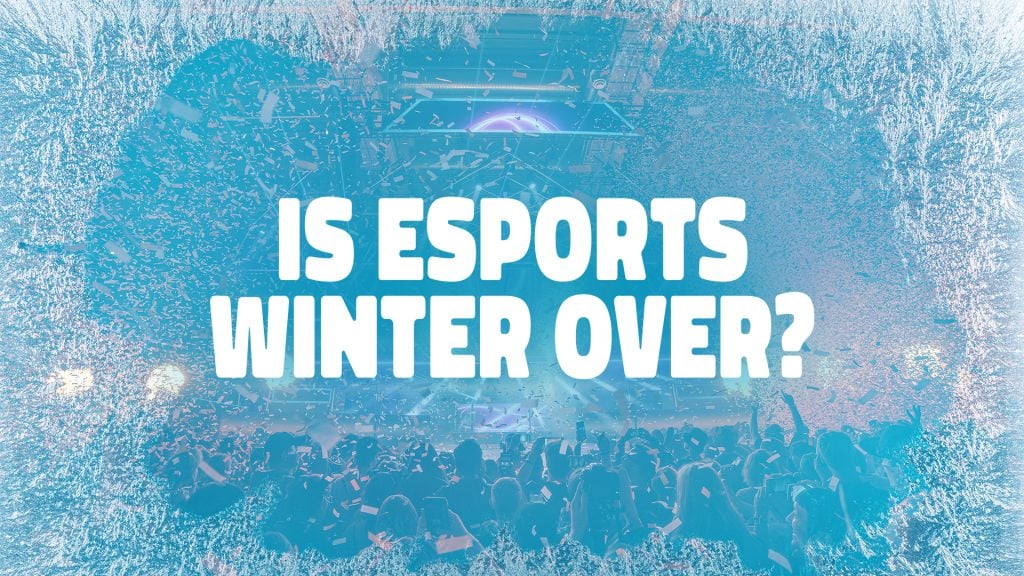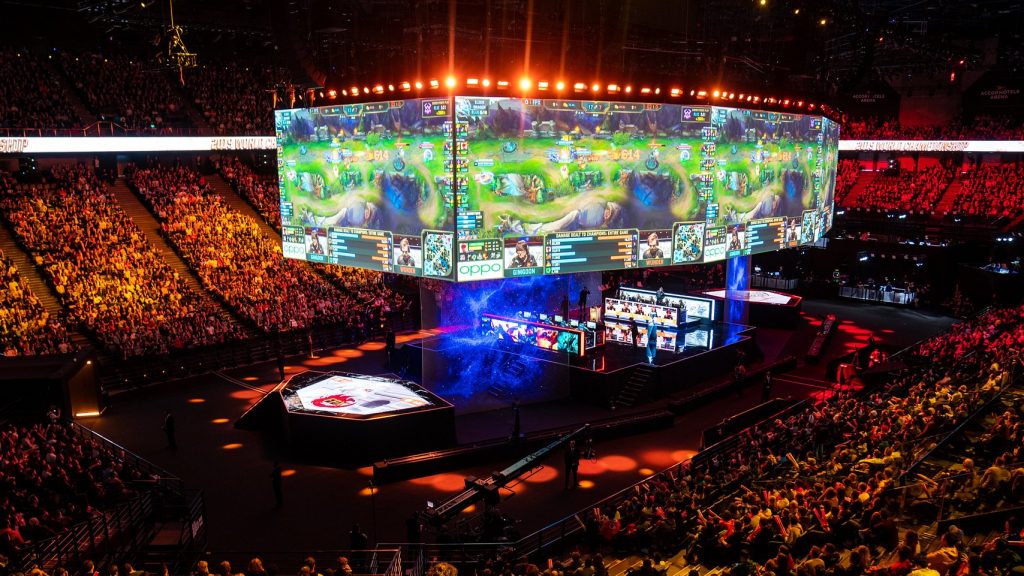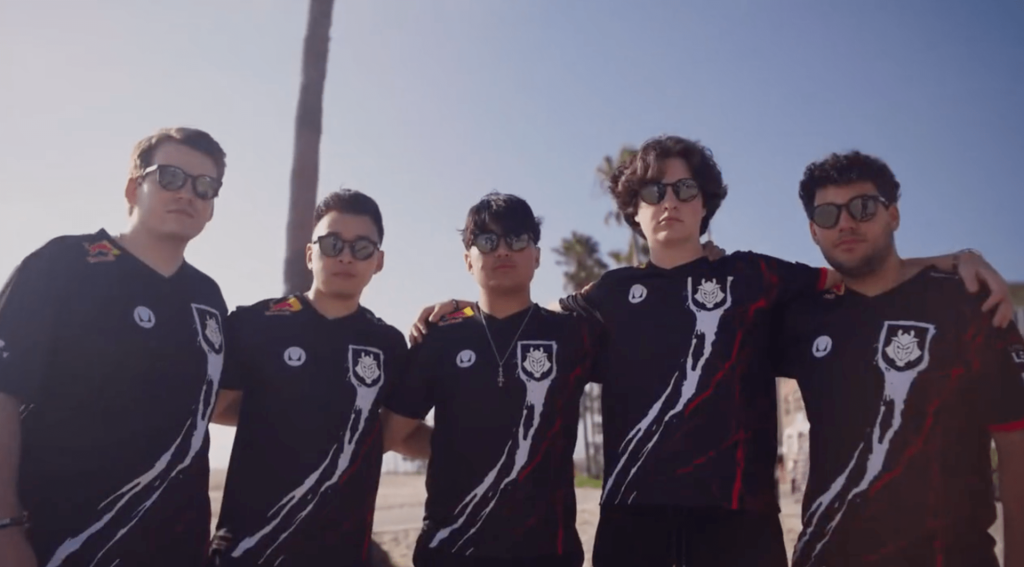
There is an Italian legend that the last three days of January, the so-called days of the blackbird, can predict whether the spring season is just around the corner or if winter will clasp its grip on the landscape for a bit longer.
The esport industry is in its days of the blackbird. The worst of winter seems to have passed, but spring is still not in full bloom. How close is esports to seasonal change?
Some claim winter never even came for the industry and this moment is just a natural trough after a very big peak. “I can assure you Berlin is very cold, and we never approached that. We’re always in the soft, Californian spring,” claimed G2 Esports CEO, Alban Dechelotte.
Pointing to consistent revenue increases and sponsorship expansion since the organisation’s founding, he highlighted G2’s continuous growth trajectory, even during the ups and downs of the pre and post pandemic era.
Still, Dechelotte acknowledged the challenge of maintaining momentum as viewership returns to “normal levels” post-pandemic, and how the industry needs innovation to go back to the numbers recorded during lockdown — like the “very smart” tactic of introducing costreaming to some franchised leagues.
Alexander Müller, CEO of SK Gaming, is not of the same opinion.
“The assumption that we are in a kind of esports winter, it’s correct,” said Müller. “You could see [companies] struggle at some point or adjust their business models, adjust spending, adjust left and right; and that’s a consequence of what’s happening around us.”
Referring not only to the COVID-19 pandemic, but also the pervasive economic uncertainty prevailing across all markets, the product of wars, inflation, and social unrest, Müller and other industry executives explained how this uncertainty affects everyone’s business model — including the orgs’.
Others, like Jonathan Jang, VP of Esports at 100 Thieves, believe esports winter is a matter of perspective. “A lot of people use the term esports winter because our revenue models from before aren’t working,” he said, emphasising that those models were never sustainable to begin with. He sees this period as organisations figuring out how to create sustainable businesses around their esports teams, describing it as a reality check for many.
These “cycles of ups and downs,” which occur in other markets as well, are what alter the investors’ perspective, according to Team Vitality’s CEO and Co-founder Nicolas Maurer.
Investors now more closely scrutinise the fundamentals of esports organisations, wary of profitability and sustainability concerns, further compounded by wider economic downturns and illusory promises of crypto money. Nonetheless, certain partners remain steadfast, renewing multi-year deals with organisations and leagues and signing new ones, signifying belief in esports’ enduring potential and suggesting pathways for stability.
This is the climate under which every player of the industry entered 2024.
According to Steve Arhancet, Co-CEO of Team Liquid, at present there are two groups of esports companies. The first one includes the well-funded, capital-rich companies which failed to create real business models and revenue, which weren’t able to raise incremental capital and “simply ceased to exist.”
The second group are companies that are running healthy businesses, looking to consolidate and merge, or which are valued “substantially lower” than their real value. Essentially, Arhancet explains, these companies’ operations might be strong and profitable, but their market valuation doesn’t reflect their true potential or current success.
A silver lining of the painful fallout of the last few years is that the industry has “less mouths to feed” now compared to before, as Arhancet pointed out. In a recent blog, Riot Games also affirmed that a more sustainable ecosystem necessitates fewer teams. By reducing the number of competing teams in T1 leagues, Riot aims to concentrate support from its new business model — the Global Revenue Pool (GRP) — ensuring there’s more revenue per team.

Vitality’s Maurer agrees, but also argues that each team has its own method of bringing home the bread, emphasising that to reach financial stability over the years one needs the right investor and a suitable time frame to create value. “You have many ways to succeed and everyone has to find what works for them and for their own, but for [Team Vitality] at least the conscious choice is to say the ‘esports performance’ model is at the centre of everything.”
This model operates on a dual focus of revenue growth and cost management, according to Maurer: participate in leagues, thereby increasing their revenue potential, while controlling the costs, which was “very difficult in an environment with easy access to capital,” like in the pre-pandemic era.
Maurer explained that back in 2018 Team Vitality made a “conscious choice not to raise money through venture capital,” as it did in 2017, which was then instrumental to achieve financial stability through the years. Citing again the up and down cycle of esports, he suspected it would have taken time to build a “robust ecosystem” and that the pressure of a shorter time frame to achieve success combined with venture capital was “not a good idea.” That might possibly be one of the reasons why Team Vitality was able to celebrate its 10th anniversary this year.
For 100 Thieves, though, esport is “just another carrier” where people can have conversations around the brand. That is because in contrast to a more traditional esports organisation, 100 Thieves sees itself as an entertainment company, as its new VP of Esports explained.
Esports, for the North American organisation, is just one among many platforms to attract and maintain audience attention to then redirect it towards various “verticals” under its brand umbrella. Basically these verticals use the brand as “leverage arms,” reaching a broader audience and generating revenue while supporting the brand in building “longevity, sustainability, and permanence” in the esport industry.
According to Jang, 100 Thieves aims for broadly diversified revenue streams as other organisations too heavily reliant on sponsors will have “really good years, really bad years,”depending on the sponsorship market.
“We’ve been around for 27 years,” SK Gaming’s Müller told me, “and we’ve always been ‘the conservative’ ones,” he said before affirming that that stance has earned it the label of “the boring ones” in the industry. The success of the SK business model relies heavily on cultivating strong relationships with partners which in return trust the team to achieve long-term success. Müller argued other brands in the ecosystem would rather focus on the “meme game,” wanting to be number one in social media, something that SK Gaming’s CEO described as a very “resource-hungry” approach — especially when converting those numbers into turnover requires a specific talent which the majority lack.
G2 might disagree.

“We don’t need anyone to make jokes about us because we’ll make the jokes ourself,” said Dechelotte whilst trying not to spill what G2’s social media ‘secret sauce’ is. “The minute we lose we have a video already produced making jokes about us losing, and that’s a very G2 thing.”
Riot Games, with its new business model, is now actively acknowledging, tracking, and rewarding efforts to cultivate a dedicated fanbase. 15% of Riot’s GRP is reserved for teams that have significantly contributed to fostering fandom around the sport and regional leagues.
John Needham, President of Esports at Riot, disclosed to Esports Insider that the metric used to determine the allocation of fandom rewards is currently the Average Minute Audience (AMA) for each team’s match. That metric might change in the future, but at the moment it’s the “best objective measure we can get [of] a fandom right now,” Needham said, taking Karmine Corp as one example of who would benefit from that 15% of the GRP.
It’s undeniable that a company’s distinct tone of voice, brand, and storytelling capability on social media garners recognition within the industry and contributes to its global expansion, as G2 Esports’ CEO remarked. Dechelotte highlighted that G2 prides itself on probably having one of the biggest social media and production teams in the industry, which complements its “unlimited ambition” approach to competition. This infrastructure not only bolsters the company’s presence in the industry but also affords the teams the security to make bold decisions, such as changing players even after successful outcomes like winning a silver medal.
“That’s pure G2. If anybody else was second in the world they would not change anything. For us ‘second’ is the first loser,” he concluded. This confidence in G2’s fanbase and established voice in the industry empowers it to be resolute in its choices, thus playing a pivotal role in shaping its business model.
But there are instances where the need for capital and revenue outweighs the need to appeal to the fanbase, and thus organisations make decisions that could potentially alienate fans. Such is the case for the Esports World Cup, where the record-breaking prize pool and other financial incentives drew in many established organisations to participate, despite pushback from fans on the ethical implications of participating in events hosted in Saudi Arabia, a country with a concerning human rights record.
However, esports is not one-size-fits all — organisations need to scrutinise each esport ecosystem built around a title, as applying the same rules to all games simply “doesn’t function in today’s world,” says Jack Etienne, CEO at Cloud9.
By ensuring that each team operates as its own independent business unit, Cloud9 says it generates revenue from competitions in a sustainable manner, where “each game must at least break even” financially — although the ultimate goal is profitability, says Etienne. The methods to access marketing dollars differ greatly for each game as each comes with its own set of regulations — including sponsorship restrictions — making it impossible to apply a one-size-fits-all approach across all titles.
“I had several games where I didn’t see a way to actually make this profitable,” continued Etienne. “It was just pouring cash into something that just never had a return. And so we stepped away from several games because of it.” According to Etienne, flexibility within each game’s ecosystem is essential to maximise its revenue potential in todays’ esport landscape, and thanks to this approach Cloud9 is in “a real healthy space,” he claimed.

However, revenues from tournaments are not enough to sustain an esport organisation in 2024, a sentiment echoed also by Team Liquid CEO Steve Arhancet. The percentage of revenue that would come from third party tournament organisers is “too inconsequential” to shape the strategy of the organisation, which, he argued, much like SK Gaming, relies on a conservative approach.
The “highly predictable” and recurring types of revenues, sponsorships and partnerships — which Arhancet describes as “healthy revenues” — made up 45% of Team Liquid’s revenue in 2023 and allowed the organisation to plan its business strategy. Thanks partly to that, the organisation told Esports Insider it closed 2023 “not in the red,” achieving $60 million in top line revenue, breaking even.
Heading into 2024, Team Liquid decided to build its strategy leaning into this conservative model so as to “de-risk” the forecast for this year — although Arhancet acknowledges the uncertainty of what will unfold in 2024.
Similarly, Etienne shared he has spent the last couple of years getting Cloud9 in the direction of profitability through resizing its outflow to the reality of the marketing dollars inflow in the company. “We were profitable last year, and that was the first time in a few years that we are profitable again,” shared Etienne, expressing the satisfaction of starting this year on a positive note.
However, other companies have made a conscious decision not to be profitable in 2024 to invest in a better 2025; such is the case for SK Gaming. Müller said 2023 was a very successful year for SK Gaming; the organisation generated growth which it decided to “fuel” instead of consolidating.
“I understand that from a first view you would say that not being profitable is not something positive,” he explained, “ but if you dive deeper into it, and if you look at it long-term, then it’s more or less called investment. And investment is, if you do it smart, usually very positive, not only for ourselves but for the ecosystem in total. And therefore I stand behind the decision of not being profitable in 2024.”
Likewise, G2 Esports was “nearly” profitable in 2023, instead choosing to “accelerate” by investing into Dota 2 and VALORANT, Dechelotte said. “We felt that the market was slowing down so poorly that it was a great opportunity for us to accelerate,” said Dechelotte before confidently stating G2 would be profitable “again” this year.
100 Thieves is of the same opinion as it too is investing heavily in expansion and growth, which entails high upfront costs. “I think we’ll be profitable in the future,” said Jang, “it just depends on which sectors of the business.” He explained that while some parts of the company are already profitable — without disclosing which — 100Thieves as a whole is not there yet, but “super close”.
Jang acknowledges that their financial numbers might “not be as sexy” compared to more streamlined organisations, but he argues that these investments will pay off in the long run, while orgs without vertical businesses to monetise will have to really lean on their core niche.

On the other hand, there are organisations which approached this year exercising prudence in their financial decisions to sustain revenue growth. Among them, Team Vitality’s strategy to achieve profitability in 2025 involves synchronising its expenditure with revenue generation while adhering to a “well-defined” plan for increasing income.
Maurer emphasised that while some organisations opt for profitability by simply reducing spending, Team Vitality chooses a different approach, aiming to maintain its competitive ambitions while also exercising financial discipline to reach profitability. Balancing ambition with cost reductions presents a challenge, said Maurer, as solely cutting spending may yield short-term profitability but risk “destroying a lot of value around your brand” in the mid to long term.
“Everyone in the space is tightening their belts,” said Cloud9’s CEO, “everyone in the space is trying to do more with less than everyone else.” However, he also confidently stated that the viewer base for esports is growing each year, and while now teams are not getting proper value for the fanbase they have, with time the “folks with the marketing budgets” will realise the tremendous spending power that esports fans have.
Müller also agrees that esports has a very unique and sizable audience, and it’s the organisations’ job to make it available to the “huge” brands who want to invest in the industry. “They can’t deal with esports as it is,” continued Müller, praising those few orgs who succeeded in unlocking their fanbases’ potential while going through industry downturns. “The G2s, the Team Liquids, all these great teams that established themselves and went through two, three, four, five crises. They’re actually the brands that we all respect. The others? Gone.”
And while there’s tension due to the global inflation rate and a lack of attraction for the esports industry in general, Dechelotte, like most interviewees, is confident in his “high performer” organisation’s ability to create value for partners.
It seems a shared, cautiously optimistic feeling accompanied a few major esports organisations into 2024, though the many smaller teams who have folded over the last two years may disagree — and the thousands people being laid off since the beginning of 2024 too.
Amidst the gloom, there are causes for optimism, team executives said, like a persistence in sponsorship interest this year and promising revenue growth from in-game item sales. Is it enough to constitute a change in season?
“I don’t know if we’re fully out of esports winter,” Arhancet concluded. ”It does feel like spring is in the air, I guess, but I just can’t say for sure.”



